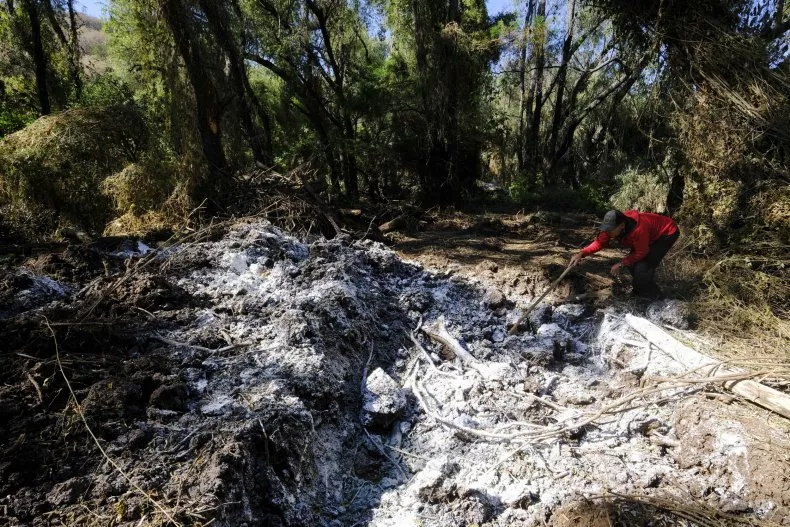80 tonnes of dead fish in Mexican reservoir after Tequila waste spill
By Sarah NeishA spill of the residual waste product vinasse has contaminated a local water source and robbed fishermen of their livelihood in Jalisco, the country’s leading Tequila region.

Researchers say it could take years for the mess to be cleaned up, following a Tequila plant spill near Ayotlan, Mexico, which took place at the end of last year, and led to tens of thousands of fish being poisoned.
The tragedy was allegedly caused by a fault at a plant contracted to treat Tequila waste products, and resulted in 60 to 80 tons of dead fish being removed from the Las Animas creek.
Millions of litres of vinasse, a residual liquid generated from the Tequila making process, spilled into the creek, which is part of the San Onofre reservoir.
How long it takes for the reservoir to return to its previous state will depend on the weather, and how much rain there is to dilute the contamination.
Partner Content
The disaster has severely impacted local fishermen, whose livelihood has now diminished. Fishermen have been scooping up the dead fish using a machine loaned from the city government and burying them in pits with lime to combat the stench of rotting fish.

An investigation has been opened to determine responsibility for the spill.
“The damage is irreparable and serious,” said Ayotlan mayor Rodolfo Hernández, who blames the Altos Residual Water Treatment plant for allowing the spill to happen and for not cleaning it up quickly enough. The plant was closed in September after an inspection revealed that one of its lagoons, which was holding vinasse, had a rupture in one of its walls.
“The majority of Tequila producers in Jalisco and I believe all of Mexico seek licenses so their vinasse can be put in the ground, in supposedly controlled land,” said researcher Aldo Castañeda Villanueva, “but the truth is that many do nothing more than cool it, allow it to settle and then dump it in rivers, reservoirs, the sea.”
Around 40% of the state of Jalisco’s land is currently used to make Tequila.
Related news
Diageo trades Cîroc stake for global Tequila push
Pimentae becomes available at Picturehouse cinemas
Jose Cuervo owner faces $80 million hit from Trump’s tariffs




